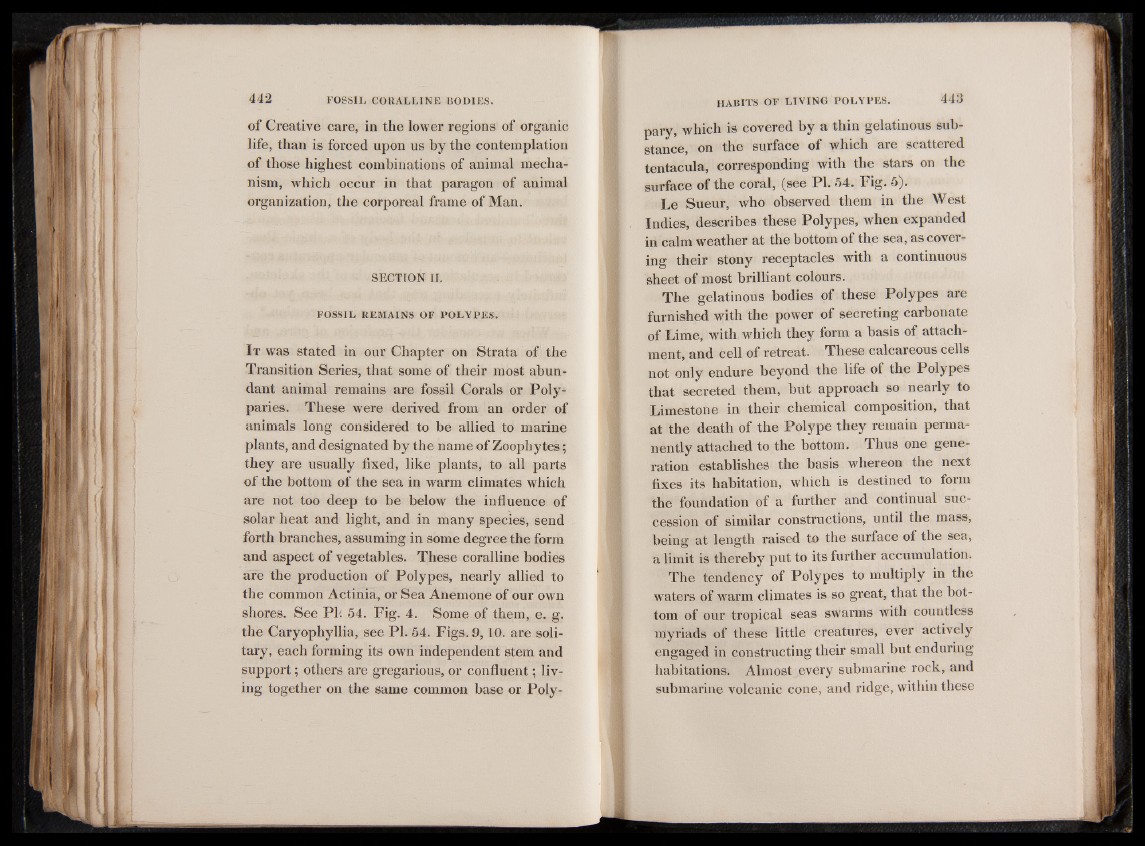
of Creative care, in the lower regions of organic
life, than is forced upon us by the contemplation
of those highest combinations of animal mechanism,
which occur in that paragon of animal
organization, the corporeal frame of Man.
SECTION m
FOSSIL REMAINS OF POLYPES .
It was stated in our Chapter on Strata of the
Transition Series, that some of their most abundant
animal remains are fossil Corals or Polyparies.
These were derived from an order of
animals long considered to be allied to marine
plants, and designated by the name of Zoophy tes;
they are usually fixed, like plants, to all parts
of the bottom of the sea in warm climates which
are not too deep to be below the influence of
solar heat and light, and in many species, send
forth branches, assuming in some degree the form
and aspect of vegetables. These coralline bodies
are the production of Polypes, nearly allied to
the common Actinia, or Sea Anemone of our own
shores. See PI'. 54. Fig. 4. Some of them, e. g.
the Caryophyllia, see PI. 54. Figs. 9 ,10. are solitary,
each forming its own independent stem and
support; others are gregarious, or confluent; living
together on the same common base or Polypary,
which is covered by a thin gelatinous substance,
on the surface of which are scattered
tentacula, corresponding with the stars on the
surface of the coral, (see PI. 54. Fig. 5).
Le Sueur, who observed them in the West
Indies, describes these Polypes, when expanded
in calm weather at the bottom of the sea, as covering
their stony receptacles with a continuous
sheet of most brilliant colours.
The gelatinous bodies of these Polypes are
furnished with the power of secreting carbonate
of Lime, with which they form a basis of attachment,
and cell of retreat. These calcareous cells
not only endure beyond the life of the Polypes
that secreted them, but approach so nearly to
Limestone in their chemical composition, that
at the death of the Polype they remain permanently
attached to the bottom. Thus one generation
establishes the basis whereon the next
fixes its habitation, which is destined to form
the foundation of a further and continual succession
of similar constructions, until the mass,
being at length raised to the surface of the sea,
a limit is thereby put to its further accumulation.
The tendency of Polypes to multiply in the
waters of w7arm climates is so great, that the bottom
of our tropical seas swarms with countless
myriads of these little creatures, ever actively
engaged in constructing their small but enduring
habitations. Almost every submarine rock, and
submarine volcanic cone, and ridge, within these